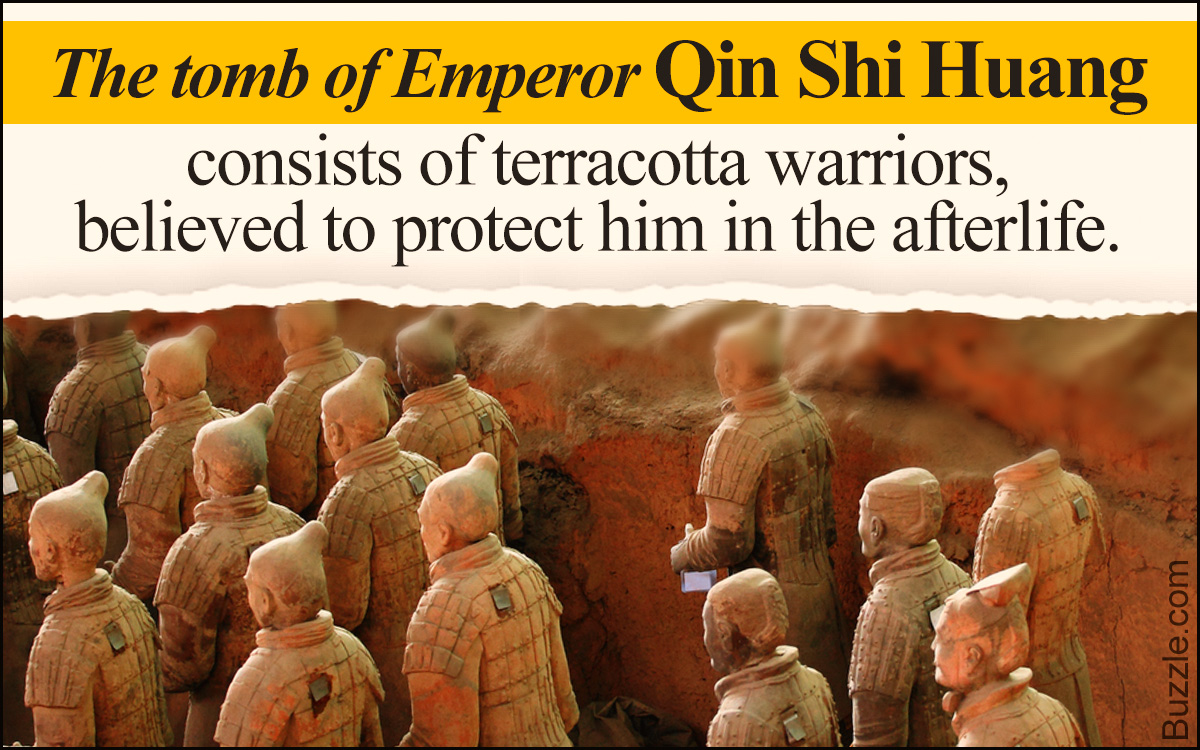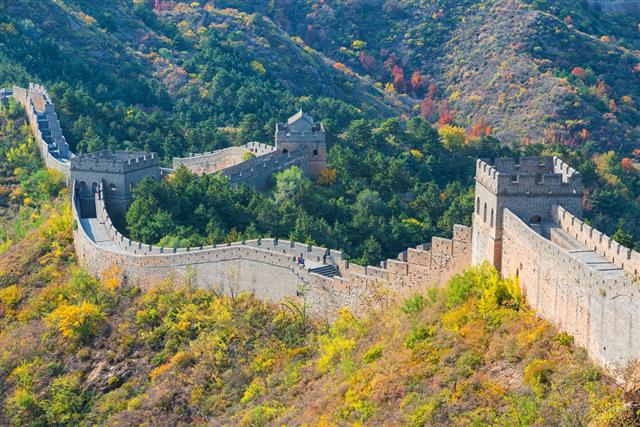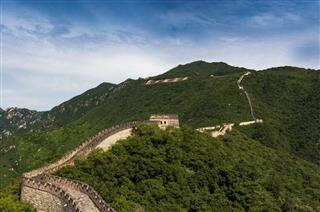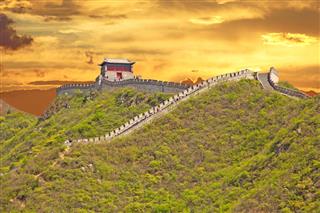
Emperor Qin Shi Huang’s mausoleum is considered to be one of the world’s splendid architectural wonders, in addition to the Great Wall of China. This Historyplex article will enlist some interesting facts about the mysterious tomb of Emperor Qin Shi Huang.
“The revelation of the structure is the greatest achievement in the study of the Qin Shi Huang Mausoleum in the past 40 years.” ― Yuan Zhongyi, honorary curator, Museum of the Qin Terracotta Horses and Warriors
Unearthing ancient objects and discovering the myriad of historical tales surrounding them have always been a fascinating part of archeology. The tomb of Qin Shi Huang, apparently the First Emperor of China, has always been a source of great mystery for archeologists. The exploration of this site started more than 40 years back, and even today, some facts are unknown and can only be guessed.
This tomb contains what is considered by some as the eighth wonder of the world, the behemoth that is the terracotta army of soldiers. The paragraphs below will take you through an incredible historical journey, and list out some Qin Shi Huang facts along with details of the objects inside the tomb.
Background

The original name of Emperor Qin Shi Huang was Ying Zheng, and he was born in 259 BCE. To the King of the Qin state.
● He ascended the throne at the age of 13 and was supposed to have been a very ambitious dictator.
● He was the one to unite all the provincial Chinese states, like Chu, Yan, Zhao, etc., and hence, he is considered as the first emperor of united China.
● He was the one who created the title of ‘Huangdi’, with ‘Shi’ (first), and hence, he was referred to as Qin Shi Huang, meaning the first ruler of the Qin dynasty. This rule was followed by all his descendants.
● He is notable for two brilliant achievements. The first one is the Great Wall of China. The second is the construction of his own tomb, which contains the terracotta army, a world-famous attraction of the modern world.
● Some sources claim that he was known to be ruthless, this probably stems from the records that he used innumerable laborers as slaves to construct his tomb, some even say that the laborers were killed so that they do not divulge the secrets and treasures of the inner architecture.
● He longed for an immortal life, and was constantly in search of the elixir that would make him immortal. According to ancient sources, one of his alchemists prescribed mercury as the elixir, and the emperor died after consuming it, during travel itself.
● While some sources say that he died at a young age of 39, others say that he died at 50.
● Coincidentally, the construction of the tomb was completed around the time he died, and was immediately used.
Discovery
- The tomb was always known to exist, what remained a secret for long was the existence of the massive terracotta army.
- On March 29, 1974, some farmers were digging a well in the east direction of Xi’an, in the province of Shaanxi, about 1.6 kilometers off the tomb.
- While doing so, they discovered a few fragments of the soldiers’ statues.
- This discovery was promptly reported to the Chinese authorities, and an excavation began.
- Many artifacts were discovered within the tomb, including the emperor’s magnificent army, yet, a major portion remains to be excavated, for we do not know what lies within the construction.
Historical Source
- Much of whatever is known about this tomb and the emperor has been derived from the writings of the great historian, Sima Qian.
- He has written all about the construction of the tomb (of course, not the inner details), which primarily includes how many workmen toiled over the construction, what artifacts were placed inside, the mercury rivers, etc.
- Surprisingly, nothing has been written about the terracotta army, which was accidentally discovered.
Location
- It is located to the east of the Lintong province, about 22 miles to the east of Xi’an.
- It is situated on the Lishan mountain to the south, while the Wei river faces it towards the northern side.
- It is at the eye of the dragon-shaped land from the Mount Li to Mount Hua.
Layout
- The tomb is a 2,200-year old structure.
- It consists of a mound, a hillock above it, and the palace underneath, where the tomb is situated.
- The size of the mound is reported to be approximately 115 x 2076 meters, while its base covers an area of 120,750 square meters.
- A lot of this data is speculated, and a myriad of mysteries lie behind these stories as well.
- The overall layout comprises an inner city, an outer city, and the grounds.
- Two-thirds of the inner city consists of the underground palace, located at the southern side, which is said to be as grand as the king’s original palace. Sources report that it had beautiful buildings and other relics, some of which include the weaponry, storehouses, and coffin chambers.
- There are different opinions regarding the number of gates, some say there were two, while others believe there may have been three or six.
- The outer city contains the massive terracotta army, the stunning architecture that has left the world speechless. Apparently, these clay soldiers were ordered to be built for the safety of the emperor after his death.
- The grounds contain the chambers for the horses, birds, and other animals. They also contain innumerable tombs of those who were buried alive with the emperor.
The Terracotta Army

- This innumerable and outstanding work of art contains the clay figures of 8,000 soldiers and over 700 horses. It is located 1.5 meters to the east of the mound.
- Today, it is supposed to be the highlight of this tomb. Each and every face of these soldiers have been molded differently.
- According to sources, more than 700,000 workmen were assembled to build this army.

- Along with faces, the size, uniform, weapons, shoes etc., of each soldier were also notably different.
- They were painted with a number of colorful pigments, and after construction, were placed in pits according to the ranking.
- Apparently, there are four pits. The first one contains the main army (6000 soldiers), and 11 corridors with large pillars, the second contains the cavalry, infantry, and chariots, the third contains the high ranking officers, while the fourth is left empty, perhaps the workmen died before its completion.
- A wide variety of weapons are found in this part of the tomb as well, including spearheads, arrowheads, axes, shields, bows, suits of armor, etc.
Detailed Dimensions and Architecture
- The four main pits of the terracotta army were approximately 7 meters deep, while the first pit is said to be 230 X 62 meters in dimension.
- Reports say that the tomb is one-fourth the size of Beijing, the Forbidden City.
- In size, it is also supposed to be bigger than the Great Pyramid of Egypt.
- The hillock over the mound was originally said to have been more than 100 meters high, 515 meters long, and 485 meters wide; however, it has now shrunk to less than 50 meters in height.
- 98 chambers were found for the horses, while 30 chambers have been found for birds and other animals.
- More than 600 tombs have been discovered, some of them belong to the workers who died, while the others belong to the ministers, statesmen, and even the mistresses of the emperor, who were buried alive with him in order to give him company.
- The palace is supposed to have a ceiling like the sky, with pearls as stars.
- Recently, another pit spanning 600 meters was found between the inner and outer wall, and on excavation, it was found to contain precious pottery and other relics.
- The entire tomb covers an approximate area of 2,180,000 meters.
- The palace is said to have been beautifully built with peals and gems.
- The coffin of the emperor is said to be built with bronze.
- The security of the tomb is said to be manifold, with mercury and other traps to prevent theft.
Remains and Objects Inside the Tomb
- As mentioned previously, the huge clay army is the only thing that remains fully excavated till date. In fact, it is said to be just one percent of the entire tomb.
- However, there are plentiful weapons and other treasures that have been found in and around the outer city and the grounds.
- These objects include the beautiful pottery patterns, innumerable weapons, bricks, tiles, intricate architectural patterns, swords, alloys, arrows, etc.
- Recent discoveries speculate that the emperor was probably a connoisseur of art and music, for many musical instruments have been excavated, which include the Bianzhong (bronze chimes).
- Many ancient books are supposed to be there as well.
- A number of statues of ministers, courtiers, musicians, acrobats, etc., were also unearthed, which confirmed the fact that the emperor wanted his afterlife to be as luxurious as his life on Earth.
- A number of other treasures and jewels are supposed to be buried in the inner chambers.
Mercury
- As mentioned earlier, the emperor died of mercury poisoning, though some sources suggest otherwise.
- On careful excavation and research, archeologists have found that the emperor’s body is perhaps preserved because of the mercury.
- The tomb is rumored to have booby traps and 100 rivers of mercury flowing around it to protect it.
- Perhaps, the danger of mercury is what is preventing further research, for we do not know how and where the mercury has been placed.
- An evidence of this is that the researches used modern technology to estimate the internal palace structure and found strong deposits of mercury.
- Other tests on the soil near the outer city also show mercury contamination.
- This goes to prove that mercury is indeed present inside, in vast quantities; this also proves that the emperor’s body was properly preserved and embalmed.
Speculated Dangers
- The tomb is said to be massively protected.
- Tests have indicated that the protection was strongly designed such that anyone trying to enter it would be instantly killed.
- The internal structure is said to be covered with booby traps.
- Research has indicated that a layer of chromate was found on the weapons, which prevents them from rusting. This means that the crossbow structure and arrowhead traps designed to prevent thieves from entering could very well work even today.
- Technicians have also predicted that further excavation would be very dangerous, mainly because we do not know what kind of traps have been set.
Emperor Qin Shi Huang is a legend and has left behind a dynasty and architecture to be proud of. His tomb remains a mystery till date. The artifacts excavated until now have given us a wonderful account of his rule and the Qin era; however, if it is ever possible to further excavate the palace (though the excavation has been stalled for now), we could discover a plethora of marvelous facts about his kingdom, his courtiers, his rule, etc. For now, we have to be satisfied with the terracotta army and other treasures.





